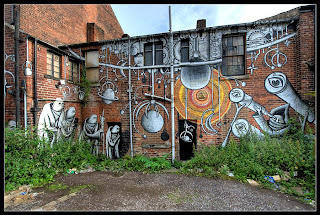After a meeting with Jill, she quickly saw a link between mine and an ex student Lia Hayes's work after looking at my nature photography. After taking a look at Hayes' work, our work seems to have a certain emptiness about it as we explores areas that would otherwise be overlooked and attempt to put a narration to them. In Hayes' work this is sometimes a spoken/written narration, or music she put over the top of a video.
When I first started thinking about how I was going to capture nature's liminal spaces, I did think about doing a video with the sounds of the natural enviroment of the space but never did it. However, after looking at Hayes' work I decided to give it a go with my buildings liminal space exploration.
With this video, I wanted to really pick apart the barns characteristics and find what it was that made it such an odd space. By isolating the sounds of the barn and playing them over the still images, it created a frozen in time effect; but when I played the song over the videos at the end, it seemed to bring the space to life and it was no longer a dead space. This is similar to what I was trying to achieve by putting images of life behind the tree/cave photos.
I really like the finished piece of this but I'm not sure how I would or will present it. I would quite like to project it onto a liminal space like previously mentioned Polly Stanton.



















































